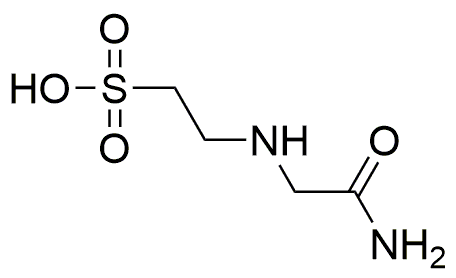ACES is widely utilized in research focused on:
- Biological Buffers: Commonly used in cell culture and biochemical assays, ACES helps maintain a stable pH, ensuring optimal conditions for enzyme activity and cell growth.
- Pharmaceutical Formulations: In drug development, ACES serves as a buffering agent, enhancing the stability and solubility of active pharmaceutical ingredients, which is crucial for effective medication delivery.
- Protein Purification: Employed in chromatography techniques, ACES aids in the separation and purification of proteins, making it essential for biotechnological applications and research.
- Electrophoresis: Used in gel electrophoresis, ACES provides a consistent pH environment, improving the resolution and reproducibility of nucleic acid and protein separation.
- Cosmetic Formulations: In the cosmetic industry, ACES is utilized for its buffering properties, helping to stabilize pH in skincare products, which enhances their effectiveness and shelf life.
General Information
Properties
Safety and Regulations
Applications
ACES is widely utilized in research focused on:
- Biological Buffers: Commonly used in cell culture and biochemical assays, ACES helps maintain a stable pH, ensuring optimal conditions for enzyme activity and cell growth.
- Pharmaceutical Formulations: In drug development, ACES serves as a buffering agent, enhancing the stability and solubility of active pharmaceutical ingredients, which is crucial for effective medication delivery.
- Protein Purification: Employed in chromatography techniques, ACES aids in the separation and purification of proteins, making it essential for biotechnological applications and research.
- Electrophoresis: Used in gel electrophoresis, ACES provides a consistent pH environment, improving the resolution and reproducibility of nucleic acid and protein separation.
- Cosmetic Formulations: In the cosmetic industry, ACES is utilized for its buffering properties, helping to stabilize pH in skincare products, which enhances their effectiveness and shelf life.
Documents
Safety Data Sheets (SDS)
The SDS provides comprehensive safety information on handling, storage, and disposal of the product.
Product Specification (PS)
The PS provides a comprehensive breakdown of the product’s properties, including chemical composition, physical state, purity, and storage requirements. It also details acceptable quality ranges and the product's intended applications.
Certificates of Analysis (COA)
Search for Certificates of Analysis (COA) by entering the products Lot Number. Lot and Batch Numbers can be found on a product’s label following the words ‘Lot’ or ‘Batch’.
*Catalog Number
*Lot Number
Certificates Of Origin (COO)
This COO confirms the country where the product was manufactured, and also details the materials and components used in it and whether it is derived from natural, synthetic, or other specific sources. This certificate may be required for customs, trade, and regulatory compliance.
*Catalog Number
*Lot Number
Safety Data Sheets (SDS)
The SDS provides comprehensive safety information on handling, storage, and disposal of the product.
DownloadProduct Specification (PS)
The PS provides a comprehensive breakdown of the product’s properties, including chemical composition, physical state, purity, and storage requirements. It also details acceptable quality ranges and the product's intended applications.
DownloadCertificates of Analysis (COA)
Search for Certificates of Analysis (COA) by entering the products Lot Number. Lot and Batch Numbers can be found on a product’s label following the words ‘Lot’ or ‘Batch’.
*Catalog Number
*Lot Number
Certificates Of Origin (COO)
This COO confirms the country where the product was manufactured, and also details the materials and components used in it and whether it is derived from natural, synthetic, or other specific sources. This certificate may be required for customs, trade, and regulatory compliance.


